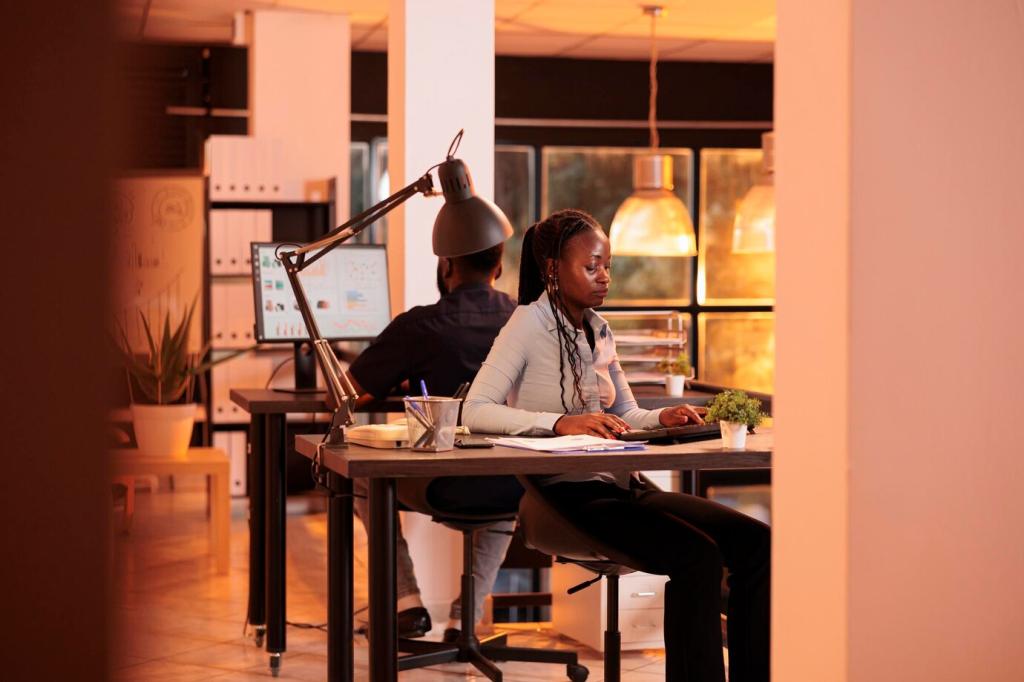Innovative Trends in Modern Home Office Design
The home office has evolved from a practical necessity into a hub of creativity, productivity, and personal expression. Today, the modern home office is defined not just by function but by innovative design choices that inspire and motivate. As remote work becomes more prevalent, the ways in which we personalize and optimize our workspaces are more crucial than ever. Dive into the latest trends shaping home offices, blending technology, sustainability, flexibility, and well-being to foster environments where people truly thrive.
Smart Technology Integration
Voice-activated assistants have become central to smart home office setups. With devices like Alexa, Google Assistant, or Siri, professionals can control lighting, temperature, notifications, and even schedule reminders without lifting a finger. This level of automation reduces manual interruptions, keeps the workflow smooth, and ensures that essential adjustments are made instantly to suit working preferences. The technology not only saves time but also reduces decision fatigue, allowing users to focus on more complex tasks. Additionally, voice assistants can integrate with other smart devices, turning the entire workspace into an interactive, responsive environment that adapts dynamically to the user’s needs throughout the day.

Flexibility in home office design often begins with furniture that serves multiple roles. A desk might convert into a craft table, or a sleek cabinet could house both office supplies and family games. Convertible storage keeps clutter at bay while accommodating fluctuating storage requirements. It’s not uncommon to see Murphy desks that fold away when not in use, or bookshelves that act as partitions between professional and living areas. This innovative approach means every square meter of the home office is efficiently utilized, supporting a seamless transition between work and leisure, and fostering a true work-life balance.
Flexible and Modular Design
Recycled and Reclaimed Materials
Materials sourced from recycled or reclaimed origins are making a significant impact in modern home office design. Desks crafted from repurposed wood, recycled steel shelving, and chairs made from upcycled plastics offer both environmental benefits and unique aesthetic appeal. These materials often come with their own stories and textures, adding character and a sense of authenticity to the workspace. Beyond their sustainability, they often last longer and reduce waste, reminding users of their commitment to the environment. Choosing recycled furnishings in the home office sets a powerful example—combining style with meaningful environmental stewardship.
Energy-Efficient Appliances and Lighting
Energy-conscious design is a core feature of today’s home offices. LED lighting, smart thermostats, and ENERGY STAR-rated equipment dramatically reduce household consumption. Integrating timers or presence detectors minimizes unnecessary energy use when spaces are unoccupied. Such choices not only help lower utility bills but also lessen the environmental footprint of working from home. By adopting energy-efficient devices, remote professionals can contribute to global sustainability goals without sacrificing comfort or productivity. The modern trend of energy stewardship aligns perfectly with a growing awareness of the need for responsible consumption and environmental protection.
Indoor Plants and Biophilic Design
Biophilic design—the inclusion of natural elements in built environments—is experiencing a renaissance in the home office. Strategic placement of potted plants or living walls infuses workspaces with fresh air, soothing aesthetics, and subtle acoustic benefits. Research suggests that greenery can enhance concentration, lower stress, and boost overall happiness. Plant selection, from low-maintenance succulents to air-purifying ferns, allows users to tailor the plant palette to their personal taste and ecological awareness. In addition to their visual appeal, indoor plants embody a tangible commitment to sustainability and well-being.
Previous slide
Next slide

